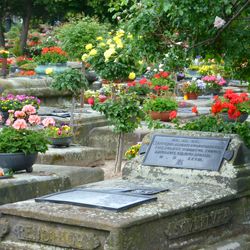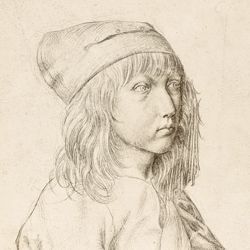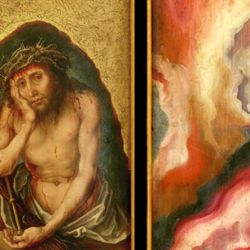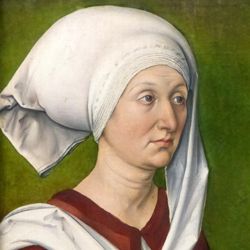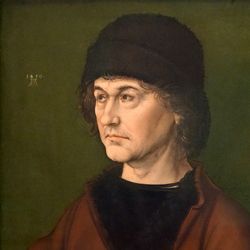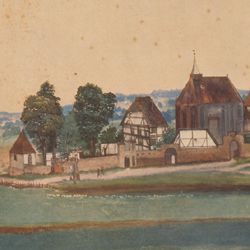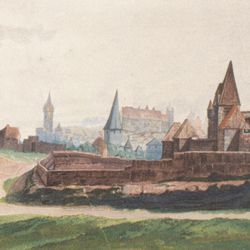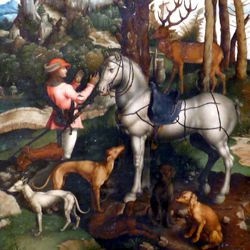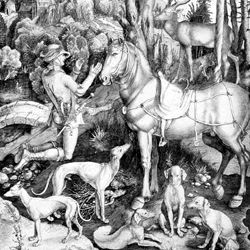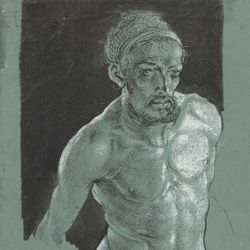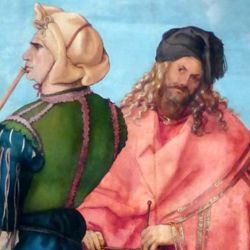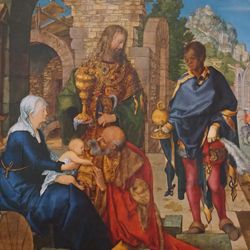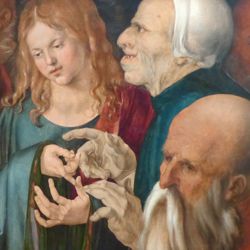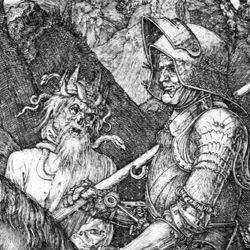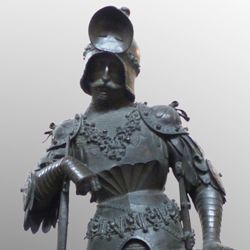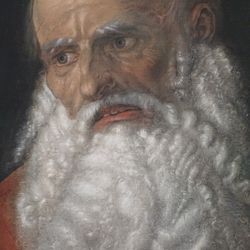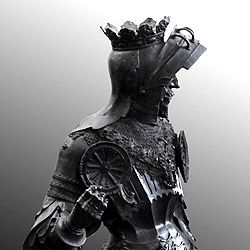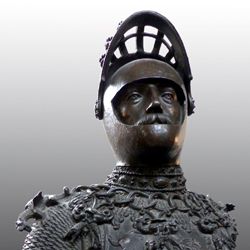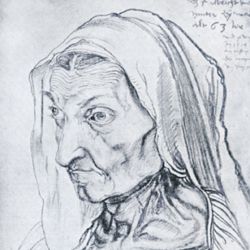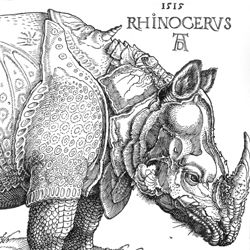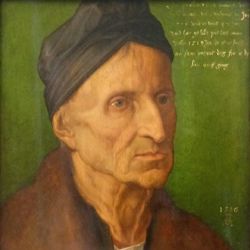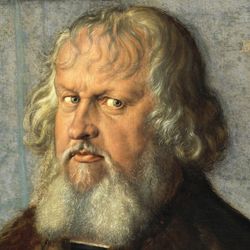Albrecht
Dürer
painter, draftsman, copperplate engraver, goldsmith, art theorist
born Nürnberg, 21. May 1471
died Nürnberg, 06. Apr 1528
Durer and the Durer time blow up the previous relationships in the arts in the German-speaking countries – although not in the field of architecture. For the first time the life of an artist becomes known in detail and in depth, for the first time his interests go far beyond his traditional professional skills and knowledge. For the first time a distinctive thirst for knowledge and a deep longing for a theory of arts emerge, although the arts do not leave the ground of absolutely solid workmanship. The message of the arts becomes more elaborated, leaving the territory of mere Christian symbolism. The unequal qualitative weighting sculpture / painting in the German countries is everted (in the Late Gothic period there were no significant painters that could be compared to first class contemporary sculptors like Multscher, Gerhaert, Riemenschneider, Erhart, Kraft, Stoß on the European scale). That changes with Durer, painting reaches a quality which before only the works of the Dutch painters van der Weyden and van Eyck could boast. On the other hand the German Renaissance is lacking a more significant group of sculptors whose quality is on par with the quality of Durer, Cranach, Grunewald, Baldung and Holbein despite of Gregor Erhart and Conrad Meit. The world fame of the German graphic art is now being consolidated. Regarding this point one cannot think of Durer without remembering Martin Schongauer. Durer combined, so to speak, the results of his studies with the insights he gained from the Italian Renaissance, achieving an explosive outcome. The possibility to easily distribute the woodcuts enabled the Durer reception even in parts of the world as far away as South America already within the 16th century (see the image of his rhinoceros in Tunja, Colombia). Eroticism emerges in German art for the first time (being continued and developed by Sebald and Barthel Beham). Not only does the attraction of male beauty make Durer a kindred spirit of the great Italians of his time, but his animal figures like the famous hare also reach an ultimate art-historical climax. Durer´s relationship with the world of forms of the antiquity remains ambiguous – the Gothic fund of Nuremberg is inseparably connected to his works. Disregarding his long stay in Venice this remained so. It is exactly this “German character” which Vasari complains about. It is the crux of the Nuremberg history that the City lost nearly all of the significant works of her great progeny to collections and museums in other cities – and with them a great deal of her self-confidence concerning her heritage, and the wealth and the importance of her culture as an imperial city. The 19th century marked the end of her glorious past. The more gratifying is the fact that Durer´s private residence and workshop at Tiergärtnertor survived, even though only barely, the apocalypse of 1945 (which he had probably anticipated). Dr. Pablo de la Riestra, May 2019
